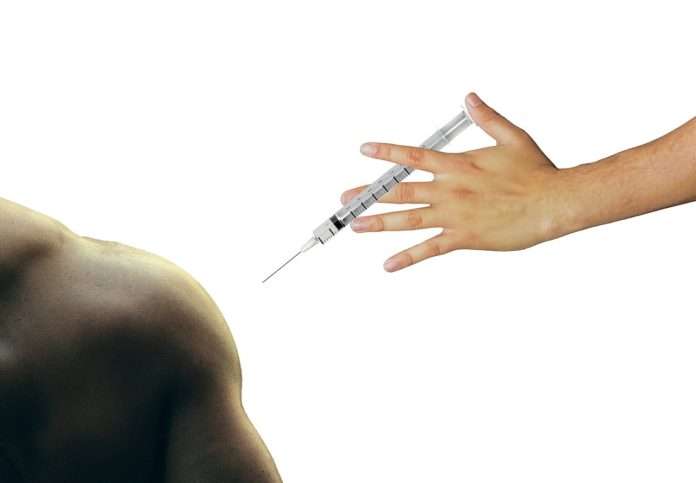Do you know what causes shingles? Are shingles symptoms because of a viral or a bacterial infection? Shingles is a viral infection, occurring due to the invasion of Varicella zoster into your body. Apart from shingles, Varicella zoster is also responsible for causing chickenpox.
After you recover from chickenpox, Varicella zoster may continue to exist in the nervous system for many years. If any external stimulus triggers the virus, it may revive as shingles. The virus Varicella zoster also goes by the name of human alphaherpesvirus 3 or HHV-3. Varicella zoster is one distinct member of the nine herpes family of viruses that infects human body.
Scientific name for shingles is ‘herpes zoster’ that mostly affects adults, unlike chickenpox. You will usually find chickenpox patients who are children, teenagers or younger adults. Varicella zoster goes by many names- varicella virus, zoster virus and chickenpox virus because of its global pathogenicity. The virus VZV belongs to the Phylum incertae sedis, under the order Herpesvirales. Varicella zoster is the member of the Herpesviridae family, under genus Varicellovirus.
The significant shingles symptoms mostly constitute a reddish rash on your skin, with a sense of burning and pain. You will usually notice streaks of blisters on various parts of your body- mostly in the torso region, face, and neck. Generally, cases of shingles take up to two to three weeks for complete recovery. In the normal scenario, you will have infrequent chances of coming across shingles twice in your lifetime- exactly like chickenpox.
Table of Contents
What are the common shingles symptoms?
The initial distinct sign of shingles is a sensation of burn and pain on your skin. You will experience rashes, along with pain and burning in minute spots all over your body. Typical characteristics of rash includes:
- Reddish blotches
- Constant itchiness
- Blisters with fluid or pus inside them that are prone to breakage or spillage
- Mostly encompassing the spine and torso area
- Evident on neck, ears, and face.
Sometimes you may experience some additional shingles symptoms along with rashes, such as-
- Fatigue
- Headache and dizziness
- Fever
- Frequent shivers or chills
- The weakness of muscle tissues
Other rare but severe shingles symptoms include-
- Ramsay Hunt syndrome- includes the inability to hear or taste anything. You may also feel excessive pain in one of the ears, followed by dizziness. Ramsay Hunt syndrome is a serious one and requires immediate medical attention.
- Ache and rashes in your eyes, which needs treatment at once in order to avoid loss of vision permanently.
- Chances of bacterial infections, as your immunity is already under attack. Redness, rashes, inflammation, and tenderness of your skin making it suitable for unwanted bacterial infection over the viral invasion.
What happens when shingles attack your face?
Usually, you will notice shingles symptoms on the back of your body or chest area. However, you may even get shingles on your face in the form of red rashes. If rashes are in close proximity to your ears, it may cause severe ear damage like permanent loss of hearing.
What happens when you compromise with your ears or hearing ability? Ears help in maintaining the overall balance of your body. Once you face difficulty in hearing, you start experiencing problems with balancing and even weakening of facial muscles.
If you have shingles symptoms in your mouth, it can be extremely painful. It may lead to multiple issues like difficulty in eating, affecting your ability to taste. The facial region also involves your scalp, so it is better to say that shingles concern your entire head part. If you got shingles on your scalp, it can cause a lot of discomfort in brushing or combing your hair. Without opting for proper treatment at the right time, shingles may even result in permanent loss of hair.
How are shingles dangerous for your eyes?
When shingles attack the area surrounding your eyes, the scientific term is herpes zoster ophthalmicus or ophthalmic herpes zoster. Herpes zoster ophthalmicus can happen to a small percent of 20 individuals with shingles infection.
What are the evident regions of infection? Blisters mostly appear on your forehead, eyelids, and occasionally on the sides and tip of the nose. Ophthalmic herpes zoster can cause burning and continuous throbbing sensation around the ocular area. There are also other shingles symptoms of redness, blurry vision, and inflammation.
Even after the disappearance of rashes in the optical region, you will still feel discomfort and pain because of nerve damage. With the passage of time, you will gradually recover from all the soreness.
You need to go for regular eye checkups during and after herpes zoster ophthalmicus. Any negligence in the treatment can cost you your eyesight permanently. There can be chances of long-term scars on your cornea due to inflammation.
Learn and understand the details of how shingles can affect your eyesight, by taking advice from your ophthalmologist. At any time if you suspect shingles symptoms in the optical areas, visit your eye doctor at once. It is important to begin treatment in the initial 72 hours to avoid any sort of long-term complications and risks.
Can shingles affect your back and butts?
Shingles can spread to the back of your body quite easily, reaching up to your buttocks. You will mostly see shingles around your waist, appearing in the form of blister stripes. One interesting fact about shingles on your back is that it will only attack either your left or right side. You will not have shingles rashes on both your butts. If your left buttock has shingles, your right buttock will be free of it.
Similar to other areas of your body, shingles on the back can cause symptoms like itching, inflammation, and tingling sensation. After a day or two, you will gradually notice the appearance of reddish blisters on your butt cheeks. However, it is possible sometimes to not feel pain even after visible rashes.
What is the transmissible extent of shingles?
Despite the causable virus being a serious contagion, shingles is not a contagious disease. Varicella zoster has the potential to spread from one individual to another, who has no history of chickenpox or shingles. Have you ever come across shingles or chickenpox before? If not, then you are most likely to experience infection from Varicella zoster.
One fascinating fact is that you cannot have shingles infection from an individual with shingles. However, that is not the case with chickenpox even though both are the results of Varicella zoster infection. You can easily get chickenpox from an infected person.
The virus transmits easily and quickly whenever it comes across an oozing or open blister of an infected body. Once the blisters have become scabs, it is no longer favorable for viral transmission. If you wish to avert the dispersion of Varicella zoster during shingles, always cover and clean your blisters or rashes.
Avoid touching the blisters with naked unclean hands. Live a hygienic life, and always keep your hands clean with soap wash. If you have any pregnant friends, stay away from them until you recover from shingles completely. Pregnant women are extremely sensitive to any infection, so keep a distance from them and individuals with the weak immune system.
Which vaccines can work against shingles?
FDA or the Food and Drug Administration has approved the use of two distinct vaccines against shingles- Shingrix and Zostavax. If you are 50 years old or above, these vaccines will work for you.
Zostavax is a type of live vaccine that contains Varicella zoster virus in its weak form. Live vaccines are attenuated or weak forms of viruses that doctors inject in your body. Such vaccines invoke your immune response against the concerned virus.
The CDC favors the administration Shingrix, which is a new vaccine working against shingles. Shingrix has proved to be extremely effective over Zostavax, accounting for 90 percent positive response and long-lasting effects.
There are minor side effects of coming across mild allergic reactions from Shingrix or Zostavax vaccines. Some of the adverse effects include itching, redness, inflammation, and pain at the site of injection. Sometimes you may also come across a mild headache or dizziness.
Shingrix vaccine can give you certain distinctive aftereffects, such as-
- Headache
- Pain the muscles
- Fever
- Nausea
- Pain in the stomach and abdominal area
Such aftermaths generally vanish in 2-3 days after the vaccination.
You may severely react to vaccines at times, leading to anaphylaxis. Symptoms of anaphylaxis involve-
- Inflammation of facial parts including eyes, throat and mouth
- Puking and dizziness
- Urticarial issues or hives
- Abnormal beating of the heart
- Difficulty in breathing
- Redness and heat generation on skin
- Increase in your pulse rate
If you come across any of the above symptoms, do not hesitate to consult a doctor urgently. The extent of anaphylactic reactions can be fatal.
What are preventive measures for vaccines?
To avoid having shingles symptoms, it is important you get apt vaccines. Zostavax and Shingrix have proved to be two effective vaccines fighting the Varicella zoster infection. However, there are certain preventive measures that you need to be aware of before going for the two vaccines.
When to avoid Shingrix vaccine?
You need to opt-out Shingrix vaccine if any of the following factors concerns you, like-
- If you are already suffering from shingles
- Coming across a serious reaction after the initial dose of Shingrix vaccine
- When you have tested negative for the existence of Varicella zoster virus in your body. in this case, you need to opt for vaccine against chickenpox.
- Any allergic response to constituents present in Shingrix vaccine
- If you are currently pregnant or breastfeeding
- When your body temperature is more than 38.5°C or 101.3F
When to avoid Zostavax vaccine?
Do not go for Zostavax vaccine you are allergic to any of the following-
- Gelatin
- Neomycin (an antibiotic)
- Any other specific component present in the Zostavax vaccine
Other factors to be careful about prior to Zostavax vaccine administration are:
- If you are suffering from any autoimmune diseases or HIV-AIDS that has totally weakened your immunity levels.
- In times of pregnancy.
- Steroidal drugs that usually messes with your immune system.
- Cancers like lymphoma and leukemia, which has intense effects on your lymphatic system and bone marrow.
- Tuberculosis that is still active and left without treatment.
- Recent transplantation of organ.
- Cancer treating techniques like chemotherapy and radiotherapy.
How to treat shingles?
The dosage and duration of medications to treat shingles symptoms will vary from individual to individual. The common drugs that your doctor will prescribe against shingles are as follows:
- Antiviral drugs that include valacyclovir, ganciclovir, and acyclovir- helps to bring down pain and ensures quick recovery. You need to take the medications as per doctor instructions, mostly twice or 5 times per day. The method of administration is oral.
- Anti-inflammatory medications like ibuprofen- aids in easing swelling and soreness. You need to take it every eight hours approximately. The method for this is oral.
- Analgesics or narcotics- primarily helps in reducing pain. Mostly to take orally once or two times in a day.
- Tricyclic antidepressants or anticonvulsants- treat persistent pain. You should orally take these medicines around twice a day.
- Antihistamines like Benadryl (diphenhydramine) – helps in lessening itchiness. The method of administering antihistamines is oral, around once or twice per day.
- Capsaicin like Zostrix- sometimes you may suffer from a condition called postherpetic neuralgia, just after reviving from shingles. Postherpetic neuralgia is nerve pain and Zostrix helps in reducing it. Thus, you need to apply the medication topically as per the doctor’s prescription.
- Numbing patches, gels, and creams like lidocaine- reduces soreness. The medicine is for topical application according to doctor’s instructions.
Some home remedies to treat shingles include-
- Consuming foods rich in vitamins A, E, C and B12 to strengthen immune levels
- Hot and cold showers
- Calamine lotion application to soothe itchiness.
Shingles usually go away after some weeks, with very negligible chances of reoccurrence. However, visit a doctor if shingles symptoms do not reduce after 10 days. You need to go for a reevaluation of the disease and potential risk factors.


















